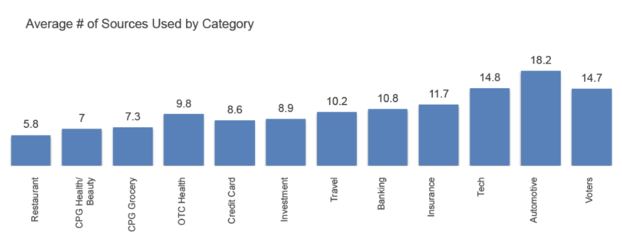Subscribe now and get the latest podcast releases delivered straight to your inbox.
 Gone are the days when consumers made a purchasing decision based off of blind faith.
Gone are the days when consumers made a purchasing decision based off of blind faith.
While the careful persuasions of advertisements used to be enough to encourage people to open their wallets, it's become evident that modern consumer craves more.
More clarification. More opinions. More proof.
Now from a business standpoint, many of us are left pondering the question: "How much more?"
What's Really Changed?
The startling truth is that your prospective customers are making decisions well before the moment of an actual in-store or online purchase. (Or prior talking with a sales person, for that matter.)
In the past, consumers have always followed a similar path toward making a purchase.
That's changed.
Before they were stimulated by an advertisement, experienced the first moment of truth at the shelf in the grocery aisle when deciding which product to buy, and had the second moment of truth after experiencing the product's benefits (or lack thereof.)
Sometimes they were pleased with their purchase, and other times, well, not so pleased.
Today, consumers are empowered by their access to information. Their buyer research spans across multiple devices and sources.
As a result, they've become less predictable, and increasingly more difficult to market to.
They no longer begin their buying process with the first moment of truth, but rather the Zero Moment of Truth.
What's the Zero Moment of Truth?
According to Google, the online-decision-making moment known as the Zero Moment of Truth is a concept that reflects the shift in consumer behavior.
"Whether we're shopping for corn flakes, concert tickets or a honeymoon in Paris, the Internet has changed how we decide what to buy. Today we're all digital explorers, seeking out online ratings, peer reviews, videos, and in-depth product details as we move down the path to purchase." (Source: ZMOT)
Wan't to know more? This brief 2-minute video explains how the Zero Moment of Truth has turned traditional marketing on its head:
Back to the Question at Hand...
How much information do your prospects need in order to make a purchase?
Well, this all depends on your industry and the type of product or service you're selling.
As part of Google's research with Shopper Science, consumers were surveyed regarding how much content they consumed in order to make purchases in various industries and categories.

As you can see, generally the more expensive the product or service, the more pieces of content are needed in order for a consumer to make a decision.
With that being said, are you winning the zero moment of truth with your audience?


Order Your Copy of Marcus Sheridan's New Book — Endless Customers!

